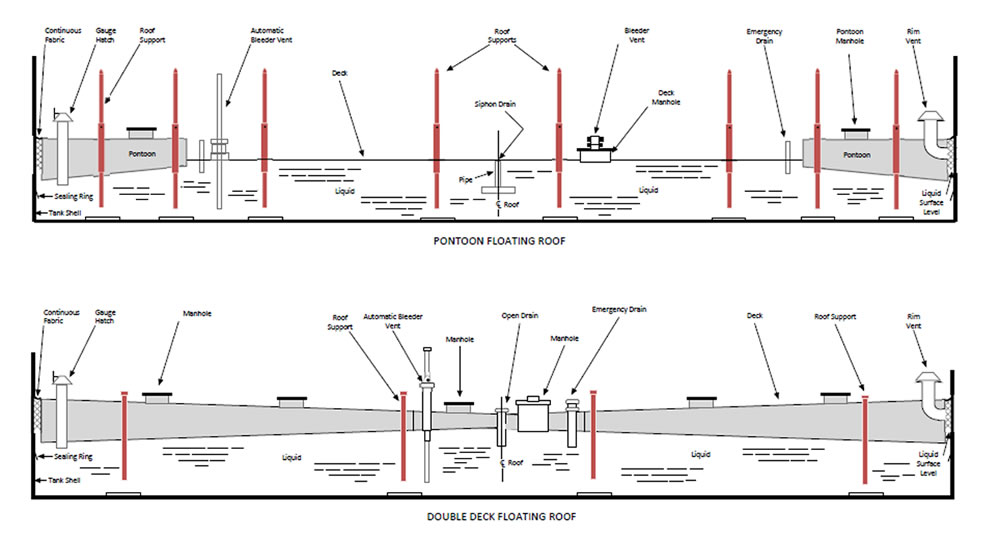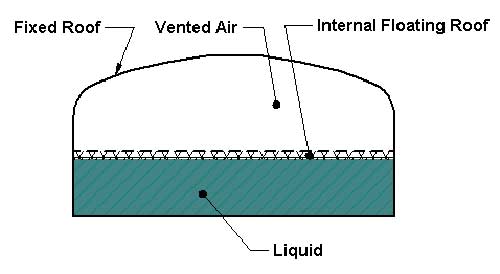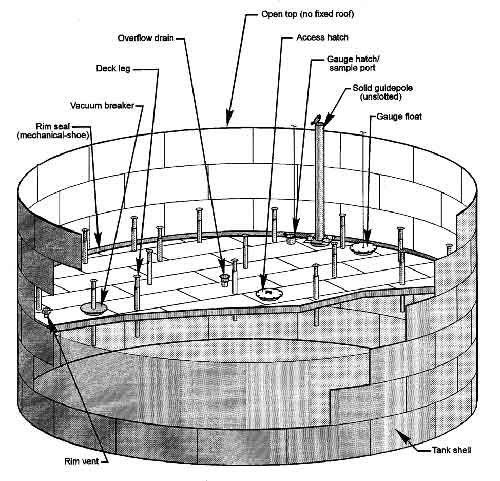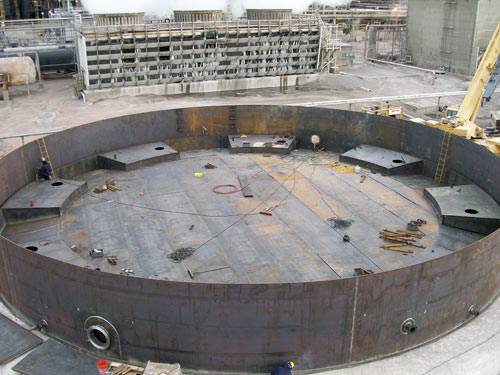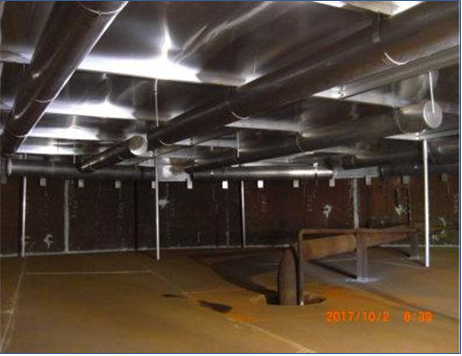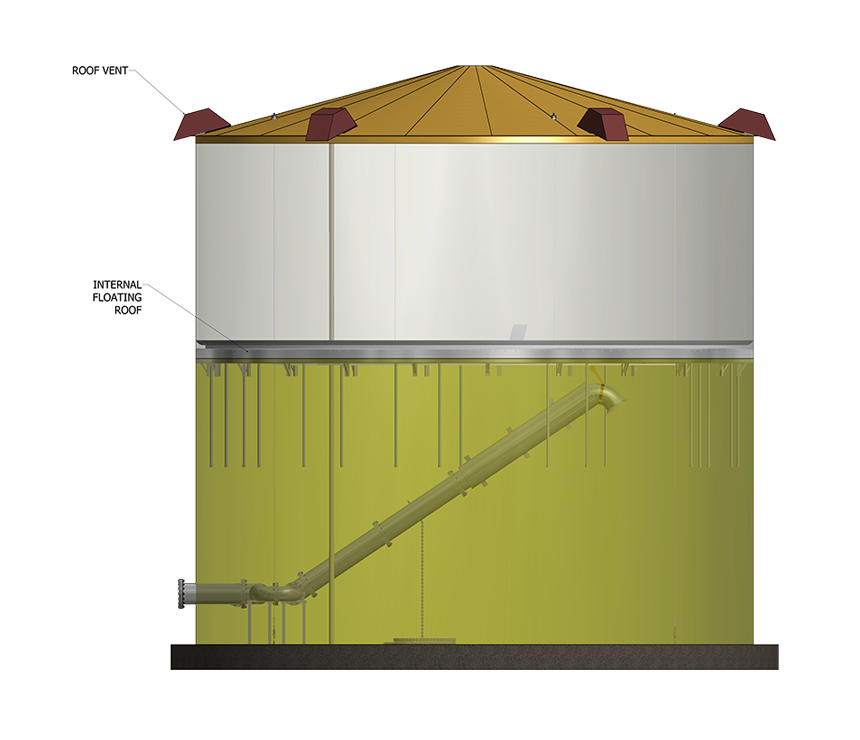However by reducing emissions the increased costs can be offset or justified on the basis of reduced product loss though evaporation a product savings and less impact to the environment.
Fixed roof and floating roof tanks.
The roof rises and falls with the liquid level in the tank.
Floating roof tanks are commonly protected against lightning ignition by bonding the floating roof to the seal shoes at no less than 3m 10ft intervals use of insulating sections in the hanging linkages covering sharp points on hangers with insulating materials and installation of electrical bond straps across each pinned hanger joint.
A traditional and typical fixed roof storage tank consists of a cylindrical steel shell with a dome or cone shaped roof that is attached to the tank shell.
Perfect designed internal floating roof storage tank is the best method to control the evaporation loss of the fixed roof tank.
An external floating roof tank is a storage tank commonly used to store large quantities of petroleum products such as crude oil or condensate.
The type of fixed roof most commonly used is a self supporting aluminum dome roof which is of.
Double deck type floating roof 10 figure 1 6.
Double deck floating roof tank 13 figure 1 8.
Tanks with external floating roofs are used primarily to contain liquids with high vapor pressures when the vapor emissions from fixed roof tanks would exceed the standards set by the local jurisdiction.
A pressure vacuum valve or breather valve is installed which allows the tank to operate at a slight internal pressure or vacuum.
The floating roofs can be either external i e with open top tanks or internal i e inside fixed roof tanks.
Types of fixed roof tanks 8 figure 1 4.
As with the internal floating roof tanks the function of the fixed roof is not to act as a vapor barrier but to block the wind.
Floating roof tanks are generally about twice as expensive to construct as fixed roof tanks so there is a trade off of risk against cost.
Single deck floating roof tank 12 figure 1 7.
Floating roof tank can be divided into two types internal floating roof and external floating roof.
Internal floating roof tank can be used to store gasoline jet fuel and other volatile oil and liquid chemicals like aldehydes alcohols methanol ethanol ketones acetone benzene benzene toluene xylene styrene.
Fixed roof storage tanks.
Domed external floating roof tanks usually result from retrofitting an external floating roof tank with a fixed roof.
Storage tank capacities and levels 15.











